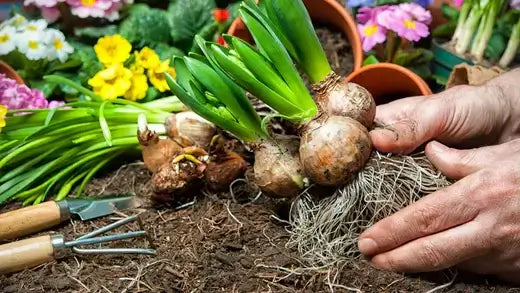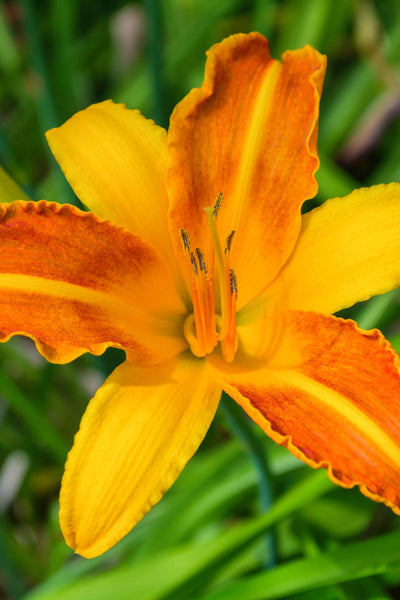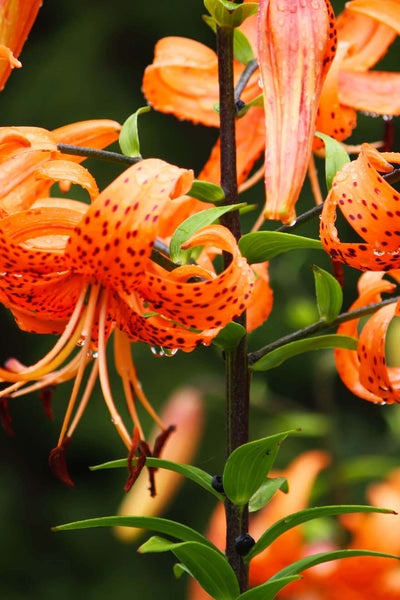A Comprehensive Care and Guide
Planting bulbs is a rewarding endeavor that brings vibrant blooms to your garden year after year. Whether you're a seasoned gardener or a beginner, knowing how to plant and care for bulbs properly is essential to ensure a stunning and healthy display of flowers. This guide will cover the process of planting bulbs and valuable tips for their care and maintenance.
1. Choosing the Right Bulbs: The first step towards a successful planting venture is to select the right bulbs. Consider your area's climate and soil conditions and the type of flowers you desire. Popular bulb choices include tulips, daffodils, crocuses, hyacinths, and lilies.
2. Timing is Everything: Timing is crucial in bulb planting. Most bulbs are best planted in the fall, a few weeks before the first frost. It allows the bulbs to establish robust root systems before winter. However, some bulbs, like daffodils, can also be planted in early spring.
3. Site Selection: Choose a location in your garden that receives adequate sunlight for the specific bulb variety you're planting. Well-draining soil is essential to prevent bulb rot.
4. Planting Depth: A general rule of thumb is to plant bulbs at a depth three times their height. Use a trowel or bulb planter to create holes, placing the bulbs with the pointed ends facing up. Space the bulbs according to the planting instructions for the specific variety, usually a few inches apart.
5. Proper Spacing: Proper spacing allows bulbs to grow and spread without competing for resources. Crowded bulbs may produce fewer and smaller flowers.
6. Watering: After planting, thoroughly water the area to help settle the soil. Keep the soil moist until the ground freezes in winter. Avoid overwatering, which can lead to bulb rot.
7. Mulching: Apply a layer of mulch, such as straw or wood chips, to insulate the soil and protect the bulbs from extreme temperature fluctuations. Mulch also helps retain moisture and suppresses weed growth.
8. Winter Care: Bulbs planted in containers should be moved to a sheltered area or insulated with straw or bubble wrap.
9. Spring Care: As temperatures rise in spring, you'll see shoots emerge from the soil. At this point, you can remove the mulch. Regularly water the emerging plants and consider applying fertilizer to support healthy growth and flower development.
10. Post-Bloom Care: Once the flowers have bloomed and faded, resist the urge to cut back the foliage. The leaves are essential for the bulbs to store energy for next year's growth. Allow the foliage to turn yellow and wither naturally before gently removing it.
11. Division and Transplanting: Over time, some bulbs may become overcrowded, reducing flowering. Dig up and divide the bulbs every few years after the foliage has died. Replant the divisions at the appropriate depth and spacing.
12. Pest and Disease Management: Bulbs are generally low-maintenance, but they can be due to pests and diseases like aphids, slugs, and bulb rot. Regularly inspect your plants and take appropriate measures, such as using organic pesticides or improving drainage, to address any issues.
13. Storing Bulbs: If you're dealing with tender bulbs that can't withstand your region's winter, such as dahlias or gladioli, you can dig them up after the first frost, let them dry, and store them in a cool, dry place
14. Container Planting: Bulbs can also thrive in containers, offering flexibility in placement and mobility. Use a well-draining potting mix. Follow the same planting depth and spacing guidelines for garden planting.
15. Continuous Planning: Consider staggering your planting to ensure a continuous display of blooms. Whether you're a seasoned gardening enthusiast or a novice with a green thumb, planting bulbs goes beyond simple horticulture – it's a journey of patience, anticipation, and connection with nature. Bulb planting, though requiring some patience, offers an almost magical experience. The process starts with selecting the bulbs. Walk into any gardening center, and you'll be greeted by various choices – tulips, daffodils, crocuses, hyacinths, and more.
Each variety has unique characteristics, from colors that span the spectrum to fragrances that enchant the senses. As you hold these bulbs in your hand, you have the potential for life. It's a connection to the very essence of growth and renewal. With each bulb you plant, you're contributing to the cycle of nature, becoming a partner in the dance of seasons. This connection to the natural world is one of the most rewarding aspects of planting bulbs, reminding us of the intricate tapestry of life surrounding us.
Planting bulbs also teaches us patience
Unlike some annual flowers that yield immediate results, bulbs are planted well before their blooming season, often lying dormant through the harsh winter months. This waiting period serves as a lesson in delayed gratification. It's a reminder that good things come to those who wait and that anticipating those first green shoots breaking through the soil is an experience.
Moreover, the act of planting bulbs encourages us to be attuned to the rhythm of the seasons. It's a tactile interaction with the earth and its cycles. As you dig the soil and place each bulb carefully at the correct depth, you're in tune with the changing temperatures, the moisture in the ground, and the balance of nutrients required. This sensory engagement with the environment nurtures a deep understanding of the interplay between plants and their surroundings. The joy of planting bulbs is not limited to experienced gardeners. Novices can also find solace and triumph in this endeavor.
Bulbs are generally easy to plant and care for, making them an ideal starting point for those new to gardening. Placing a bulb in the soil with its pointed end up can ignite a sense of accomplishment, especially when those first sprouts emerge, validating your efforts.
Furthermore, bulbs provide an opportunity for creativity. With various colors, sizes, and bloom times, you can design a garden that transitions seamlessly from early spring to late summer, ensuring that there's always something in bloom.
Experimenting with different combinations and arrangements allows you to paint your outdoor space with your artistic touch. The excitement builds as the seasons change and the moment of truth approaches. The emergence of those delicate green shoots, reaching skyward after a long period of dormancy, is a testament to the resilience of life. The buds grow more extensively daily, promising an imminent explosion of color. And then, the day arrives when the first petals unfurl, revealing the hidden beauty within. The rewards of planting bulbs extend beyond the visual appeal.
The fragrance of blooming hyacinths can perfume the air, while the sight of bees and butterflies darting from flower to flower reminds us of the interconnectedness of all living things. This interaction with pollinators fosters a sense of contribution to the ecosystem, a reminder that our gardens are part of a more extensive web of life. In conclusion, planting bulbs is a gratifying endeavor that transcends mere gardening.
The journey encompasses connection, patience, anticipation, and a deep appreciation for the natural world. From the initial selection of bulbs to the careful planting, nurturing, and eventual blooming, every step is a reminder of the cycles of life and the beauty that can emerge from even the most unassuming packages. It's a lesson in patience, a canvas for creativity, and an opportunity to witness the wonders of growth and renewal.
So, the next time you find yourself holding a bulb in your hand, take a moment to reflect on the journey it represents – a journey that will culminate in the breathtaking beauty of a flower in full bloom.
Planting bulbs is a delightful way to bring color and life to your garden.
With the proper selection, timing, preparation, and care, you can enjoy a stunning floral display that returns year after year.
Remember that each bulb variety may have specific requirements, so always refer to the planting instructions provided by the supplier. Whether you're adorning a flower bed, beautifying a patio, or adding charm to a window box, the magic of bulb planting will surely bring joy to your gardening experience.



